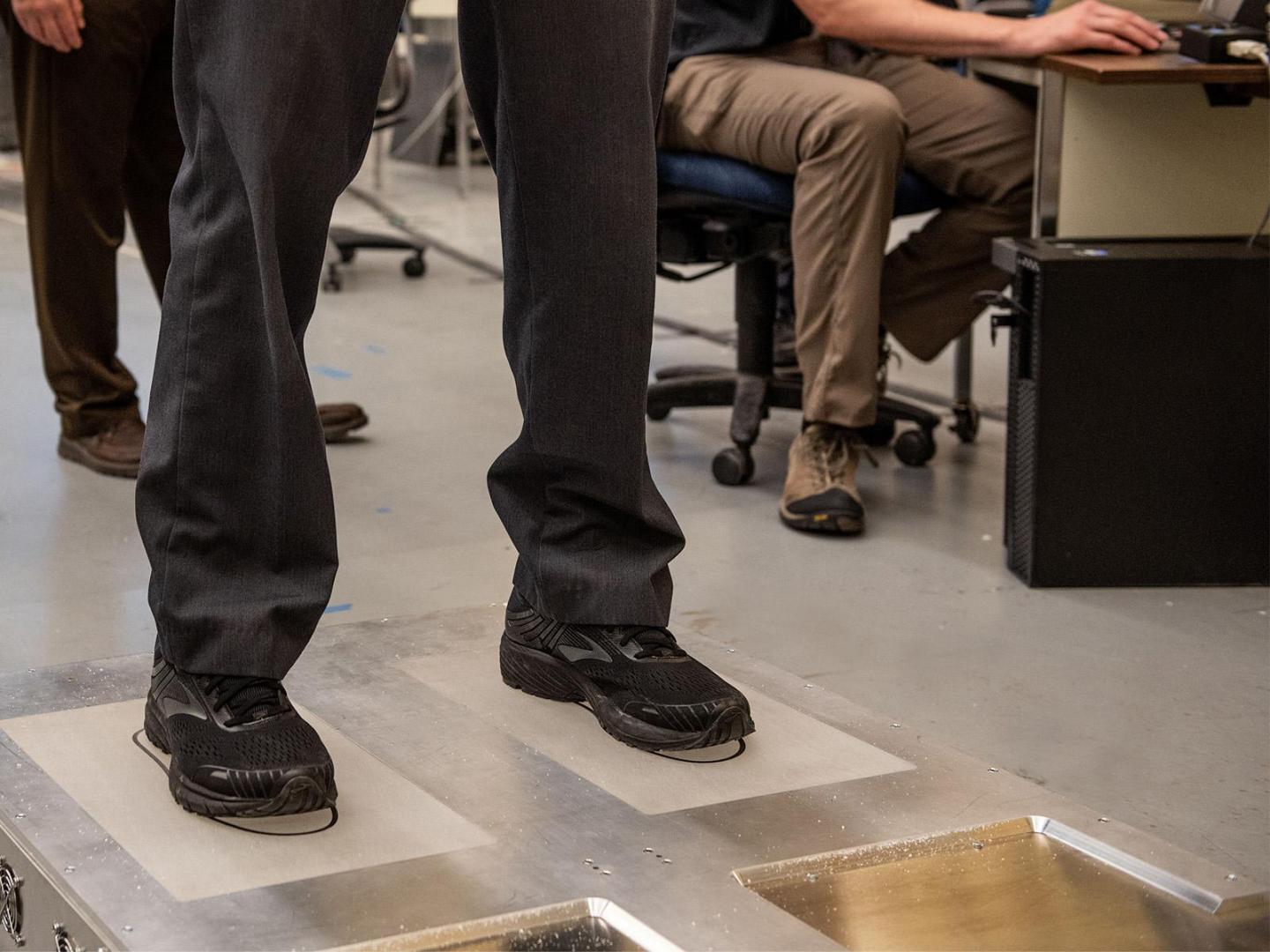This post is also available in:
 עברית (Hebrew)
עברית (Hebrew)
One of the most inconvenient parts of flying is having to take your shoes off for screening. A new shoe scanner will provide a better and more efficient security check.
The U.S. Department of Energy’s Pacific Northwest National Laboratory (PNNL) developed the original holographic millimeter-wave scanning technology–now used at airports worldwide–which can detect a wide variety of potential weapons or threats concealed under clothing.
Working with the U.S. Department of Homeland Security Science and Technology Directorate, researchers at PNNL have expanded and advanced the capabilities of the original scanners, with an eye to improving the passenger experience. The result is a next-generation, high-definition scanner that can identify even smaller threats with fewer false positives. In the process, they designed a similar technology that can screen a passenger’s footwear while on their feet.
The two technologies were recently licensed to a private concealed weapons detection company, Liberty Defense. Licensing government-developed technologies to the private sector is one of the missions of national laboratories like PNNL.
A shoe scan involves the traveler pausing on a low-profile imaging platform for about two seconds. Electromagnetic waves are used to generate an image of the shoe, which is evaluated to determine if an object may constitute a threat.
“Adding the shoe scanner in an airport setting could replace the inconvenient pre-boarding ritual of removing shoes at the checkpoint and potentially speed up the screening process by 15-20 percent. Streamlining security processes, while still detecting threats and keeping people safe, is a win-win proposition,” according to the company.
“The updated HD-Advanced Imaging Technology scanner offers much higher resolution,” said Dave Sheen, who manages the millimeter-wave technology program at PNNL. “Testing shows that the increased resolution improves potential threat detection, while dramatically reducing false alarms compared to the first-generation technology. Reducing false alarms and the secondary screenings they trigger means less direct contact between travelers and security personnel,” an important aspect during a pandemic.
The new system design includes improved antennas and significantly reduces imaging irregularities. With this advancement, airline passengers or people attending large public events may be scanned while wearing light sweaters or jackets, instead of having to take them off before walking through the scanner portal.
HD body scanners were designed to meet changing performance requirements and identify potential evolving threats, such as weapons, explosives and illicit drugs.
The HD Advanced Imaging Technology system will be able to incorporate the latest threat detection algorithms that may be developed by third parties. Its open architecture will provide operators the flexibility to select and use best-in-class threat detection algorithms instead of being limited to one specific type, according to eurekalert.org.


























